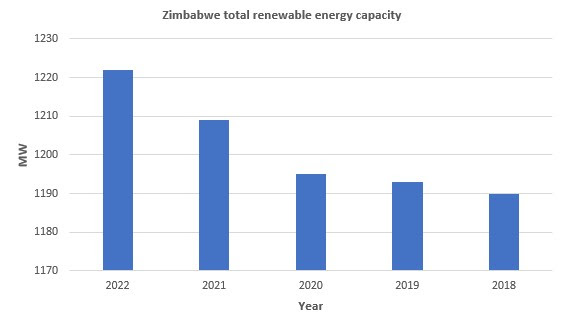By ETimes
Zimbabwe’s renewable energy capacity increased by a negligible 1.07% to 1222 megawatts (MW) in 2022 from 1209 MW in 2021, highlighting the ongoing development of the energy transition in the mix of power generation.
With the cost of oil and gas expected to stay high for the foreseeable future, countries that can generate their own energy from renewable sources would appear to be in an enviable position.
Renewable Capacity Statistics 2023, released by the International Renewable Energy Agency (IRENA), shows that the country’s share of renewable energy capacity in electricity capacity stood at 49.4% in 2022, down from 50.2% in 2021.
Off-grid capacity for total renewable energy was 4.779 MW in 2022, down from 5.263 MW in 2021.
In the last five years, the country’s renewable energy output averaged 1201 MW.
The southern African nation has been on a drive for rural electrification, but the pace has been slower than initially planned.
Load shedding has lately intensified in the country due to the loss of generation capacity at the flagship Kariba hydropower plant.
There seems to be some light at the end of the tunnel as far as the power situation is concerned, as there is hope that the long-awaited Units 7 and 8 at Hwange Thermal Power Station have been synchronised with the national grid.

The government is also currently engaging investors to come aboard as independent power producers (IPPs), with authorities having also shown their willingness to adjust and make the environment favourable for the IPPs, which will help to cover the current power gap.
The country’s electricity access rate currently stands at 62%. Zimbabwe’s electricity access rate stood at 53 percent of the population in 2020, with 86 percent of those with access being in urban areas while 37 percent are in rural areas, according to the IRENA.
In July 2019, the African Development Bank highlighted that the country needs US$34 billion over the next decade to restore its road, rail, aviation, energy, information and communication technology, and water and sanitation infrastructure to proper working conditions.
This means that the country requires US$3.4 billion annually from 2020 to 2030 – Harare


